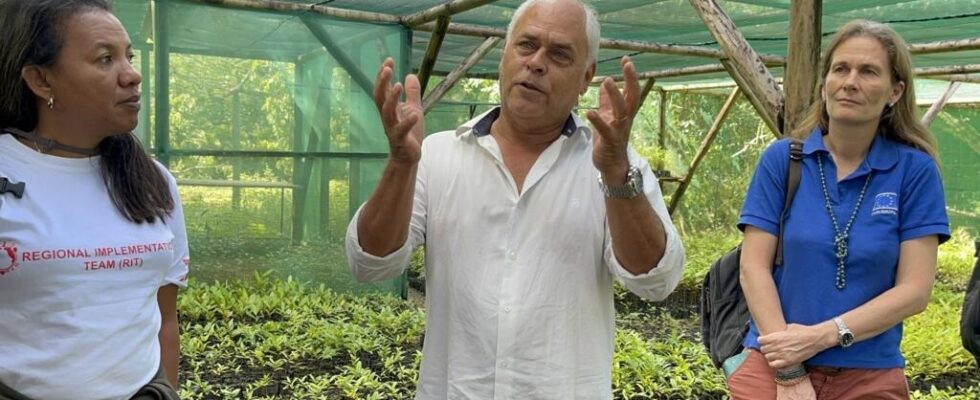One year after its launch, the Indian Ocean biodiversity restoration project, under the Critical Ecosystem Partnership Fund (CEPF), is already showing tangible results in Mauritius. An international delegation, composed of experts from the United States and the Indian Ocean, has just made an assessment visit. Illustration of the results in the Ferney Valley, in the southeast of the island. A nature reserve where mobilization drives large and small ecological projects. Report.
2 min
With our correspondent in Port-Louis, Abdoollah Earally
” Me, here, I come here every morning to work the land! » Sabrina is one of ten women who run a farm in the heart of the Ferney Valley, MauritiusThey have adopted sustainable practices: home compost, plants that protect against insects and fair sharing of harvests. What we plant, we eat: we have the brède pumpkin, lettuce, coriander, shallots and radishes ” explains Sabrina.
Oudesh, a crew member of Air Mauritius, devotes his free time to developing different composting methods in the valley. He hopes to sell his organic fertilizers to future residents of the residential projects planned in the area: ” All these people who are going to come here, they will not have the right to use chemicals in agriculture. I hope they will come to me to supply themselves with organic inputs that they will use on their farm. »
A 200-hectare sanctuary
The Ferney Valley, a 200-hectare sanctuary, is home to protected endemic flora and fauna such as the pond pigeon. Three hectares of forest have been restored through the planting of specific species.
Xavier Koenig, consultant in Ferney, explains: “ We already have fruits from 2-3 years that allow us to feed the birds, the bats, which will spread more seeds. So, it is a way of doing assisted natural regeneration. »
This project is part of the Critical Ecosystem Partnership Fund (Critical Ecosystem Partnership FundCEPF), a ten-year, $38 million initiative for the Indian Ocean, funded by the World Bank, Conservation International, the Global Environment Facility, the French Development Agency, the European Union and Japan.
Read alsoIt’s not hot air – Mauritius: faced with the degradation of biodiversity, they are doing their part
Projects for biodiversity and adaptation to climate change are projects that often take a generation, thirty years, to produce convincing results.
Manoj Vaghjee, President of the Resources and Nature Foundation which pilots long-term ecological initiatives in Mauritius
